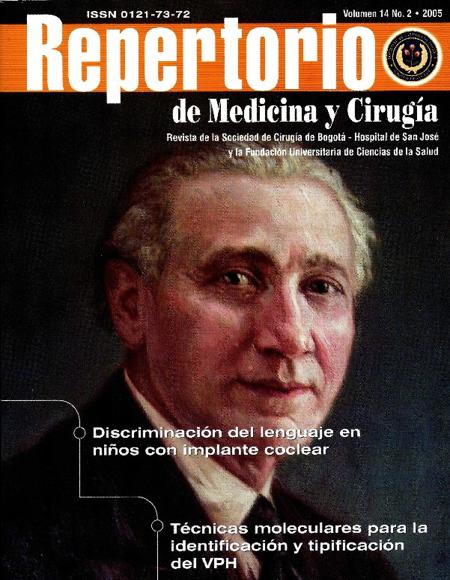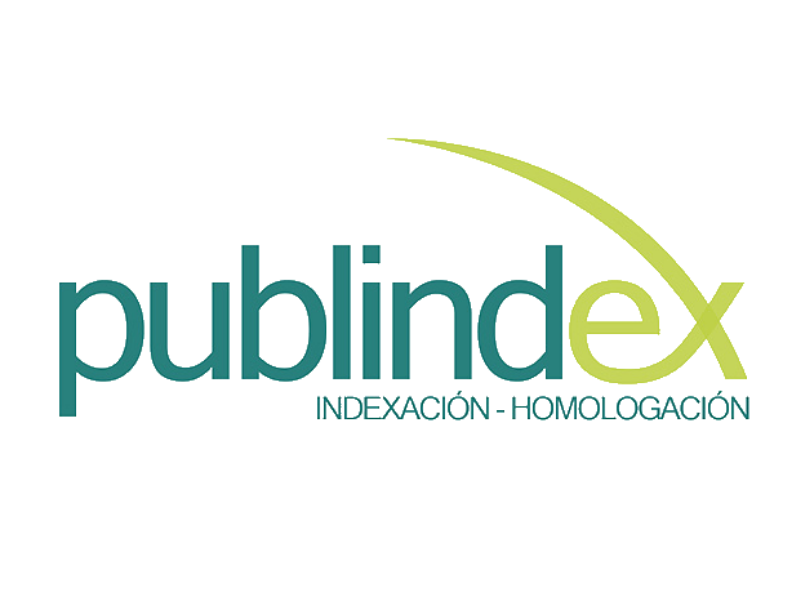Técnicas moleculares para la identificación y tipificación del virus del papiloma humano
Molecular techniques for the identification and typing of human papillomavirus
Esta obra está bajo una licencia internacional Creative Commons Atribución-NoComercial-CompartirIgual 4.0.
Mostrar biografía de los autores
La utilización de las técnicas de identificación molecular como las analizadas en el presente artículo (reacción en cadena de la polimerasa, técnica de captura de híbridos, southern dot y dot blot) permite clasificar y tipificar el virus del papiloma humano presente, para confirmar la asociación de algunas lesiones cervicales con tipos virales de alto y bajo grado, orientando de manera significativa un diagnóstico más acertado frente a otros métodos de detección o tamización rutinaria. Sin embargo, la implementación de dichas técnicas como método paraclínico de rutina, sería poco asequible para las pacientes por su elevado costo.
Visitas del artículo 920 | Visitas PDF 1010
Descargas
Alonio V L, Dalbet, Picconi M A et al. Mutaciones en genes Ha-raS Y P 53 Detectadas mediante PCR— S SCP en Lesiones Premalignas y Malignas de Cuello Uterino Asociadas con Virus Papiloma Humano. Medicina de Buenos Aires 2000; 60: 895-901.
Canseco A L. Detección molecular del VPHs y otros virus genitales en muestras de tejido cervical. Chiapas: Universidad Antonio de Chiapas. 2000. Tesis para obtener el título de Químico Fármaco biólogo.
Clive C. Masure M. Bory JP et al. Hybrid Capture II based Huma Papillomavirus detection a sensitive test to detect toutine High — grade Cervical Lesions: A Preliminary study on 1518 women. Br J Cancer 1999; 80 (9):
Faro S D, Soper E. D. Enfermedades infecciosas en la mujer. México: Mc Grawn Hill; 2002 p 504-521.
Giannoudis A. Van Duin M, Snijders PJF et al. Variations in the E2-binding domain of HPV 16 are associated with highgrade sqamous intraepithelial lesions of the cervix. Br J Cancer 2001: 84 (8): 1058-1063.
Guerrero A, Avila C, Velasco P. Mejía Roberto F. ADN del HPV detectado en células escamosas atipicas de significado indeterminado ASCUS empleando la PCR: Reporte DE dos casos Act Cancer 2000; 30 (2).
Herrera H, Restrepo de Stiefken P. El virus del papiloma humano y su relación con la neoplasia cervical humana. Bogotá: Pontificia Universidad Javeriana, 2000.
Kuen W, Cheung K,N. Leslie, Li M S et al. Transitional Cell Metaplasia of the Uterine Cervix is Related to Human Papillomavirus: Molecular Analysis in Seven Patients with Cytohistologic Correlation. Can Cytop 2002; 96: 250-258.
Kulasingam L S, Hughes P J, Kiviat B N et al. Evaluation of Human Papillomavirus Testing in Primary Screening for Cervical Abnormalities: Comparison of Sensitivity, Specificity, and Frequency of Referral. JAMA 2002; 288 (14): 1749-57.
Liaw K, Hildesheim A, Burk D R et al. A Prospective Study of Human Papillomavirus (HPV) Type 16 DNA Detection by Polymerase Chain Reaction and its Association with Acquisition and Persistence of Other HPV Types. J Infect Dis 2001; 183: 8-15.
Luque J. Herraéz A. Texto ilustrado de biología molecular e ingeniería Genética, conceptos, técnicas y aplicaciones en ciencias de la salud. Madrid: Harcourt, 2001.
Matsura Y, Kawagoe T, Toki N, Sugihara K, Kashimura M. Low Grade Cervical intraepithelial Neoplasia Associated with Human Papillomavirus Infection. Act Cytol 1998; 42 (3): 625-630.
Molano M. Prevalence and determinante of HPV infection among Colombian women with normal cytology. Br J Cancer, 2002; 87: 324-333.
Moral R. Laboratorio y Atlas de Citología. Madrid Mac GrawHill, 1995. p 78-86.
Palo G, Chyanen W, Dexeus S. Patología y Tratamiento del Tracto Genital Inferior. Barcelona: Masson; 2000.
Picconi M A, Alonio V, Carranca García A et al. Variantes Moleculares del Virus del Papiloma Humano (HPV) Tipos 16 y 18 en Adenocarcinomas de Cerviz. Medicina de Buenos Aires 2000; 60: 889-894.
Sambrook J, Russeli D. Molecular Cloning a Laboratory Manual. Cold Spring Halberd, 2 nd ed. New York: Laboratory Press, 2001. v. 1
Satoshi K, Yasutaka K, et al. Detection of human papillomaviruses in cervical neoplasia using multiple sets of generic polymerase chain reaction primers. Gynecol Oncol 2001; 81: 47-52.
Serman F. Cáncer Cervicouterino; epidemiología, historia natural y rol del virus papiloma humano. Perspectivas en prevención y tratamiento. Rev Chil Obstet Ginecol 2002; 67 (4): 318-23.
Szuhai K, Sandhaus E, Kolkman-Ulijee M S et al. Novel strategy for Human Papillomavirus Detection and Genotyping with SybrGreen an Molecular Beacon Polymerase Chain Reaction. Am J Pathol 2001; 159 (5): 1651-1660.
Van Den Brule JC, Adriann P R, Fransens-Daalmeijer N et al. GP5+ / 6+ PCR followed by Reverse Line Blot Analysis Enables Rapid and Higt-Throughput identification of Human Papillomavirus Genotypes. J Clin Microbiol 2002; 40 (83): 779-87.
Vince A, Kutela N, ISCIC-BES J et al. Clinical utility of molecular detection of papillomavirus in cervical samples by capture technology. J Clin Virol 2002; 25: 109-12.
Zhang A, Maner S, Betz R et al. Genetic Alterations in Cervical Carcinomas: Frequent Low-level amplifications of Oncogenes are Associated with Human Papillomavirus Infection. Int J Cancer 2002; 101: 427-33.













